Scala Collections
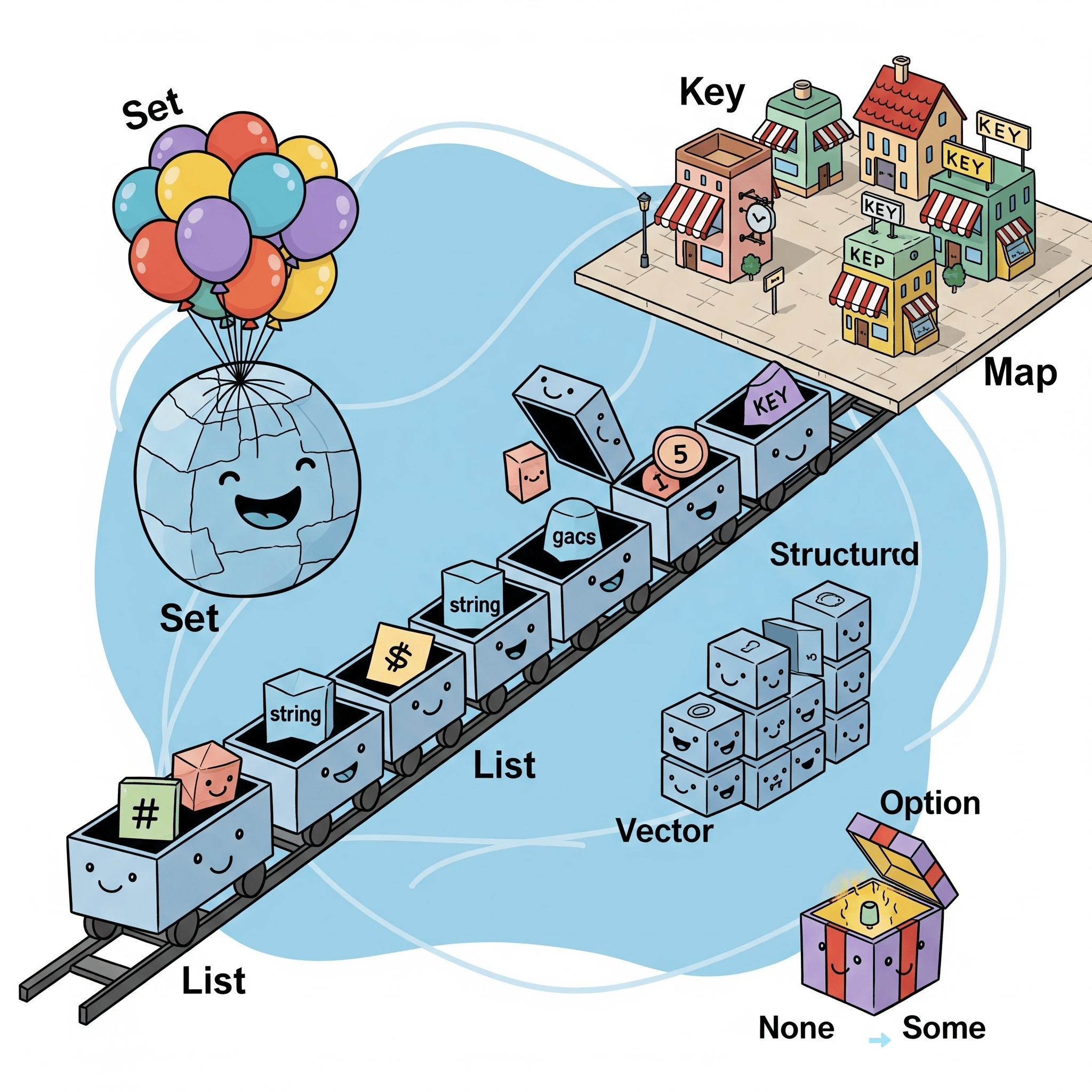
Explores the powerful Scala Collections library, detailing immutable and mutable collection types like Lists, Sets, and Maps, along with their common operations for efficient data manipulation. Understand the benefits of immutability and the flexibility of mutable collections in Scala for building robust applications. This guide highlights essential tools for any Scala developer working with structured data.
- Scala 2 Collections Overview
- Parameterized Types
- Defining Your Own Parameterized Types
- List
- Sets
- Map
- Common functions
- flatMap is special
- Folding
- Reduce
Scala 2 Collections Overview
Scala 2 collections are powerful, flexible, and unified. They are organized into three main categories1:
- Seq: Ordered, indexed, or linear sequences (e.g.,
List,Vector,Array,Queue) - Set: Unordered collections of unique elements (e.g.,
Set,SortedSet) - Map: Collections of key-value pairs (e.g.,
Map,SortedMap)
Each category has both immutable and mutable versions. By default, Scala uses immutable collections for safety and functional programming.
---
config:
securityLevel: loose
theme: default
---
mindmap
((Iterable))
[Traversable]
)Seq(
🔒List
🔒Vector
Array
Queue
🔒Range
🔒Stream/LazyList
)Set(
🔒immutable.Set
🔒SortedSet
BitSet
mutable.HashSet
🔒immutable.TreeSet
)Map(
🔒immutable.Map
🔒SortedMap
mutable.HashMap
🔒immutable.TreeMap
🔒ListMap
- Immutable collections (default): safer, thread-safe, functional.
- Mutable collections: allow in-place updates, useful for performance-critical code.
Use 🔒 immutable collections unless you have a specific need for mutability.
Algorithmic Complexity: Big O Notation
Big O notation describes the upper bound of an algorithm’s running time or space requirements in terms of the input size $n$. It helps compare the efficiency of different algorithms.
- Constant Time: \(O(1)\) — Operation takes the same time regardless of input size. Eg: Array access, hash table lookup.
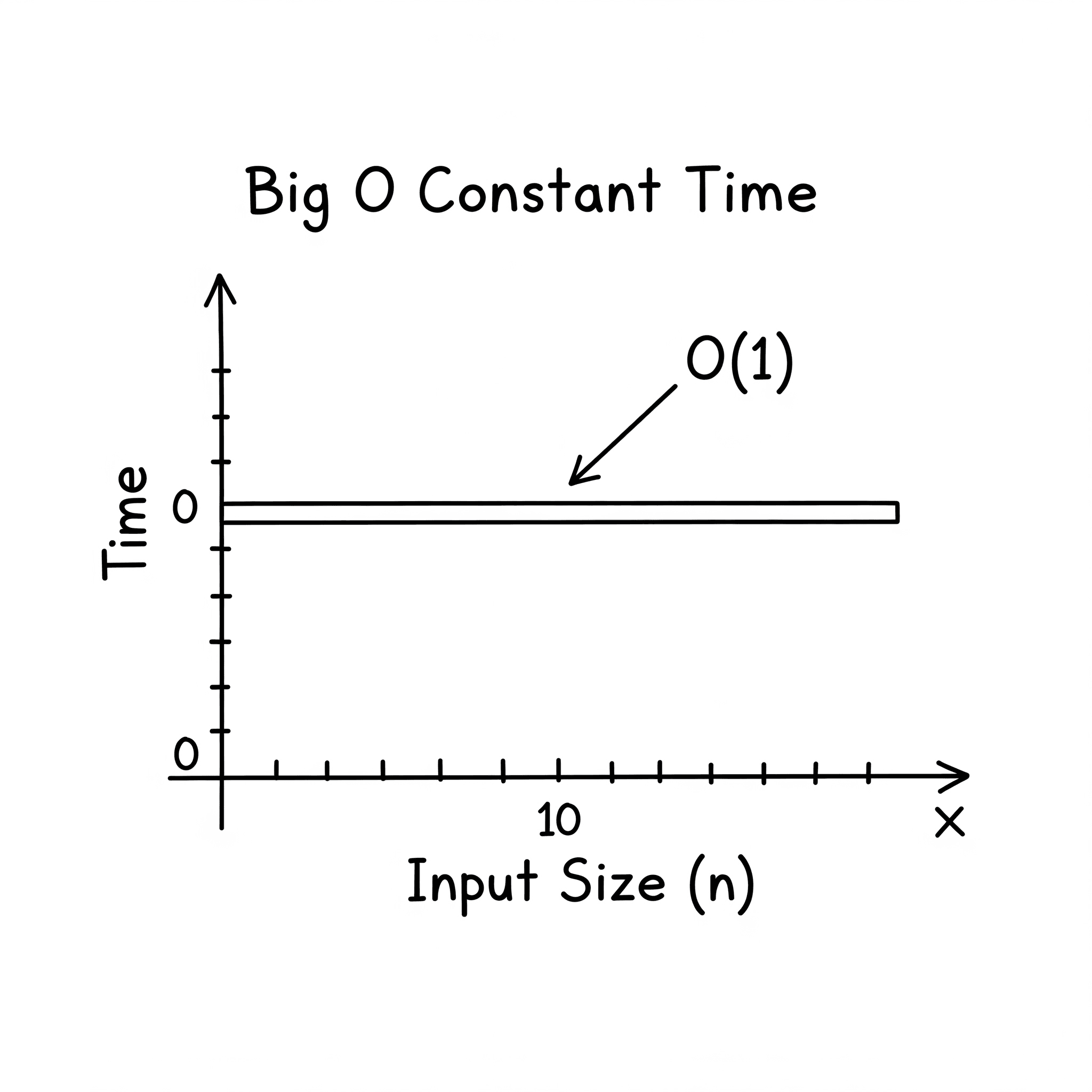
- Logarithmic Time: \(O(\log n)\) — Time grows logarithmically with input size. Eg: Binary search, balanced tree operations.
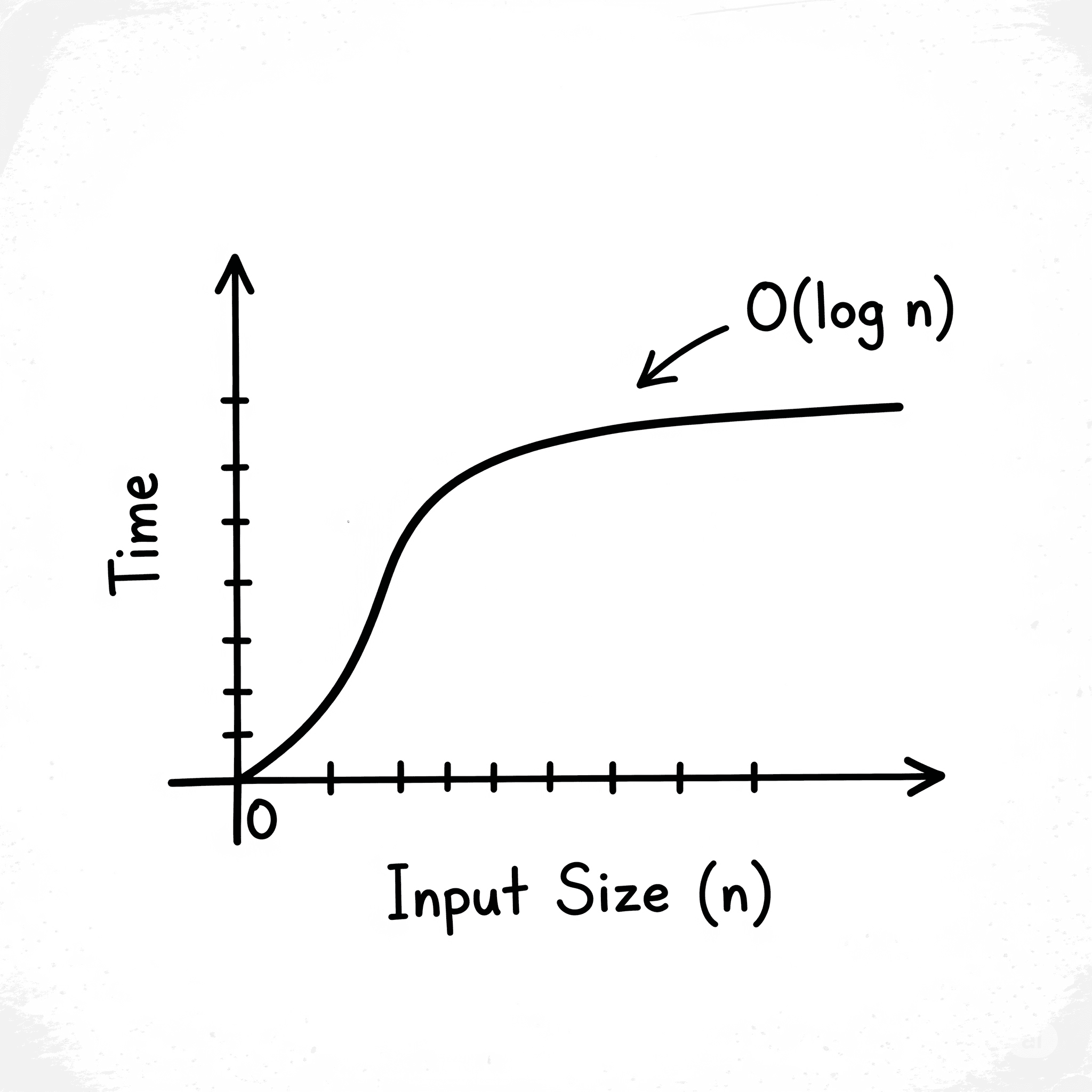
- Linear Time: \(O(n)\) — Time grows proportionally with input size. Eg: Linear search, array traversal.
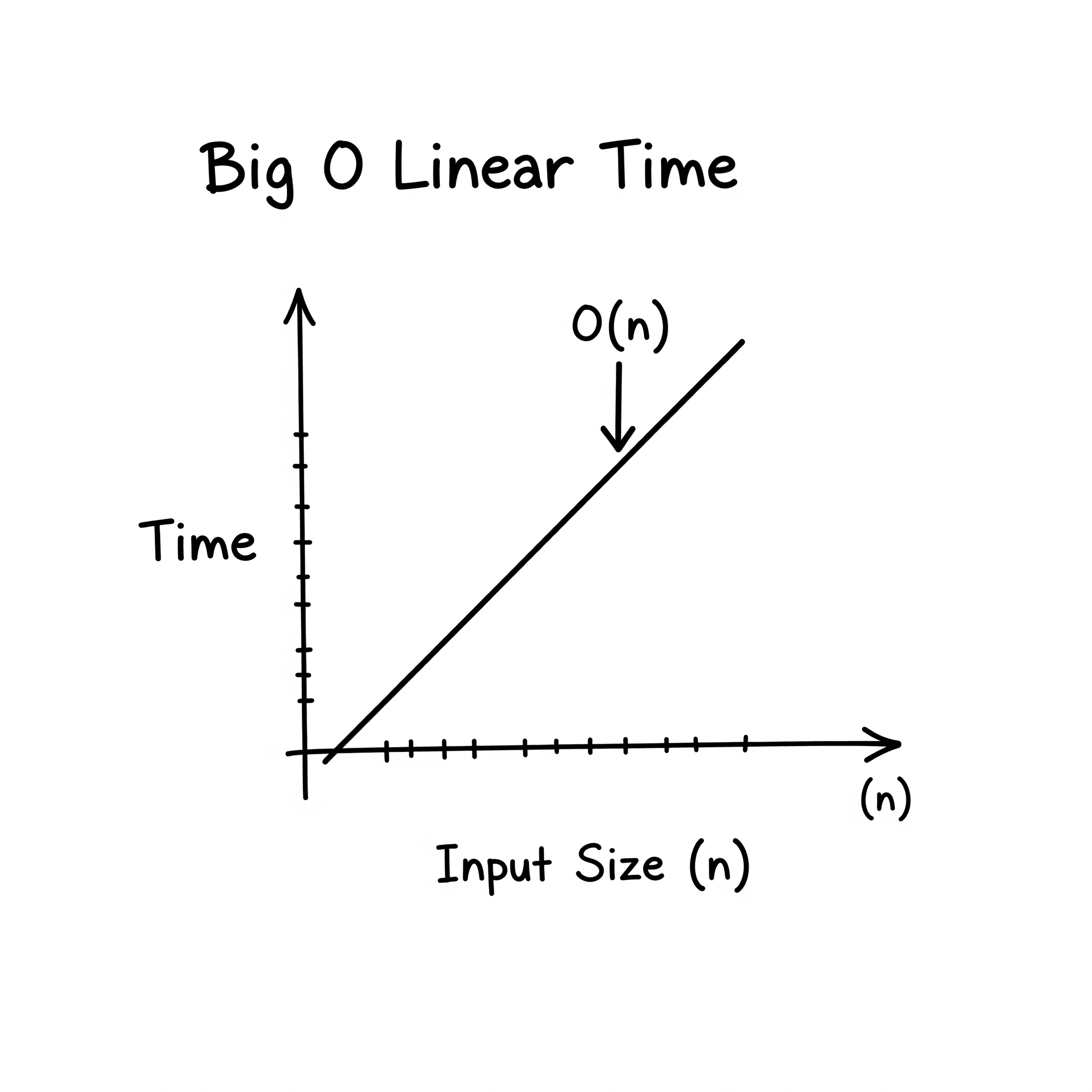
- Linearithmic Time: \(O(n \log n)\) — Common in efficient sorting algorithms. Eg: Merge sort, heap sort, quick sort (average).
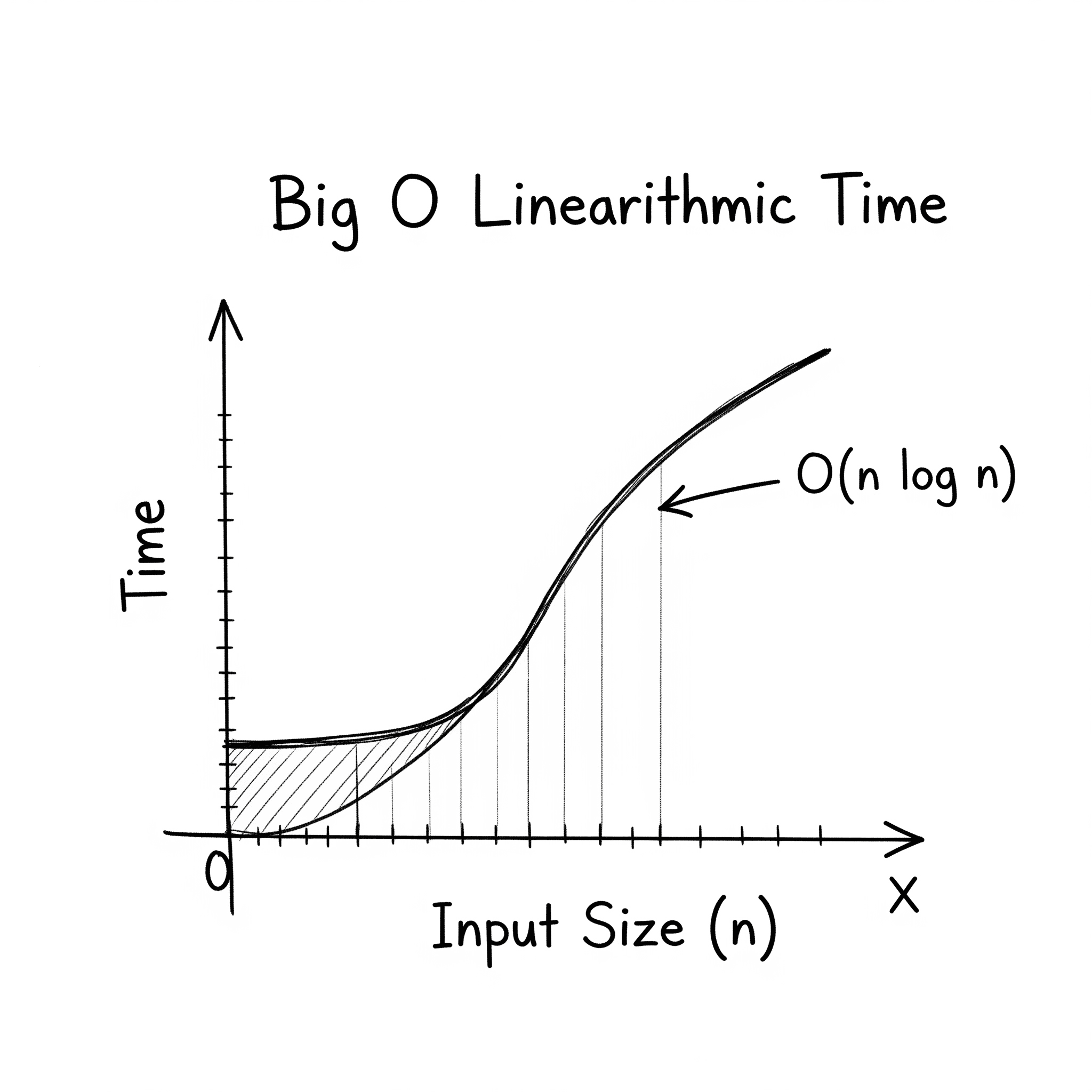
- Quadratic Time: \(O(n^2)\) — Time grows with the square of input size. Eg: Bubble sort, selection sort, nested loops.
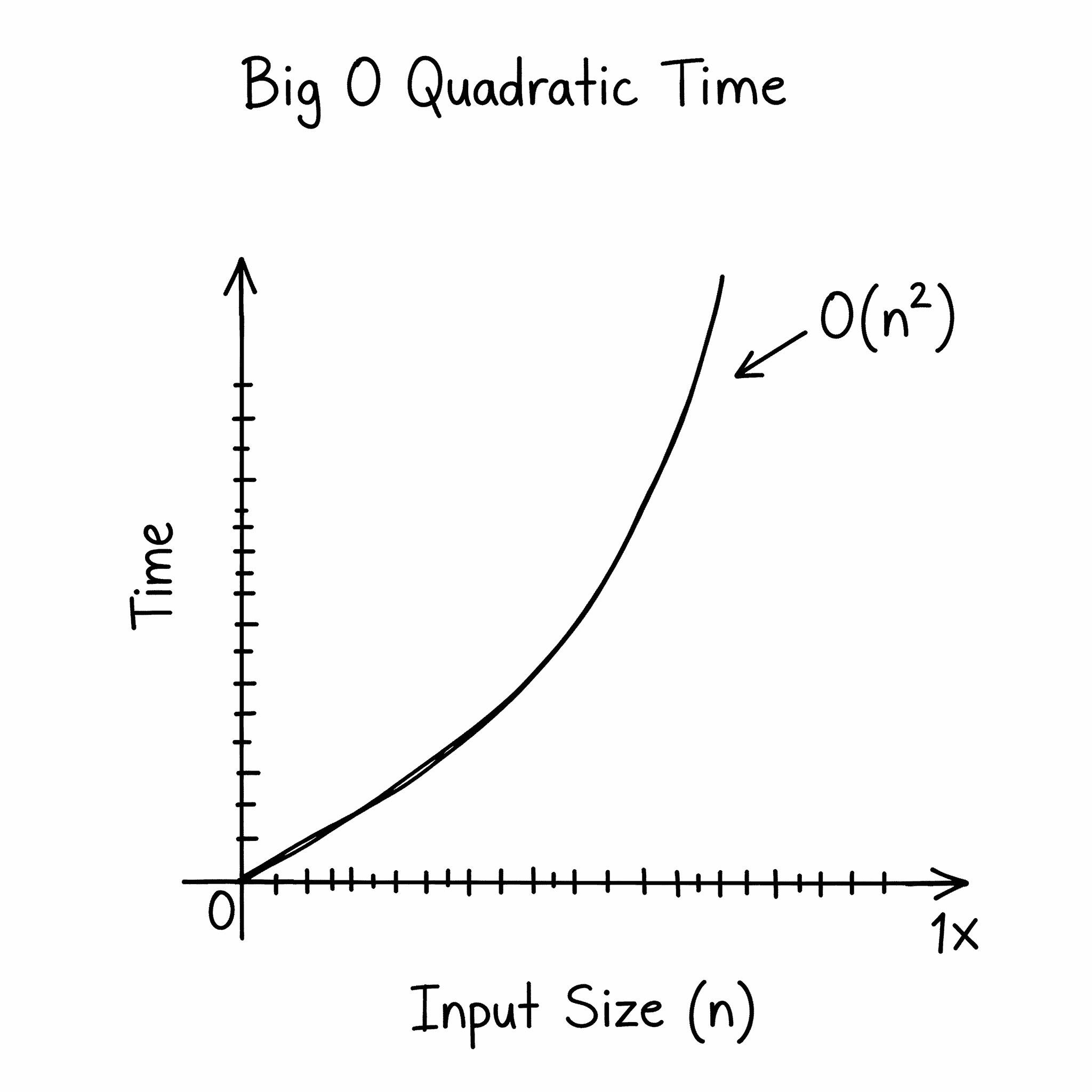
- Exponential Time: \(O(2^n)\) — Time doubles with each additional input element. Eg: Recursive fibonacci, traveling salesman (brute force).
For example, searching for an element in a List is \(O(n)\), while accessing an element by index in a Vector is \(O(1)\).
Big O notation provides a high-level understanding of algorithm performance, abstracting away hardware and implementation details.
Parameterized Types
Scala 2 collections are built using parameterized types (also known as generics). Parameterized types allow you to write classes, traits, and methods that operate on values of any type, providing type safety and code reuse.
For example, List[Int] is a list of integers, while List[String] is a list of strings. The type parameter (inside the square brackets) specifies the type of elements the collection holds.
Why Parameterized Types?
- Type Safety: The compiler checks that only elements of the correct type are added to a collection.
- Reusability: The same collection class can be used for any type.
- Expressiveness: You can express complex relationships between types.
val numbers: List[Int] = List(1, 2, 3)
val names: Vector[String] = Vector("Alice", "Bob")
val mapping: Map[String, Int] = Map("a" -> 1, "b" -> 2)
numbers: List[Int] = List(1, 2, 3)
names: Vector[String] = Vector("Alice", "Bob")
mapping: Map[String, Int] = Map("a" -> 1, "b" -> 2)
Here, List, Vector, and Map are generic classes, and you specify the type(s) they contain.
Defining Your Own Parameterized Types
You can define your own generic classes or methods:
class Box[A](val value: A)
val intBox = new Box[Int](42)
val strBox = new Box[String]("hello")
defined class Box
intBox: Box[Int] = ammonite.$sess.cmd36$Helper$Box@2e484f05
strBox: Box[String] = ammonite.$sess.cmd36$Helper$Box@5a5d8f9f
Variance in Scala Collections
Scala collections use variance annotations to control subtyping:
List[+A]is covariant:List[String]is a subtype ofList[AnyRef].Array[A]is invariant:Array[String]is not a subtype ofArray[AnyRef].
Parameterized types are essential for working with Scala collections, ensuring type safety and flexibility across your codebase.
Variance in Scala: Covariant, Invariant, and Contravariant
Variance describes how subtyping between more complex types relates to subtyping between their component types. In Scala, variance is controlled using annotations on type parameters:
+Afor covariance-Afor contravariance- No annotation for invariance
Covariant (+A)
A type constructor is covariant if, for types A and B, whenever A is a subtype of B, then F[A] is a subtype of F[B].
classDiagram
Type_B <|-- Type_A : extends
class Type_B
class Type_A extends Type_B
class F[+A](val value: A)
val aF: F[Type_A] = new F(new Type_A)
val bF: F[Type_B] = aF // Allowed: F[Type_A] <: F[Type_B]
defined class Type_B
defined class Type_A
defined class F
aF: F[Type_A] = ammonite.$sess.cmd39$Helper$F@4eedd8ec
bF: F[Type_B] = ammonite.$sess.cmd39$Helper$F@4eedd8ec
- Use case: Collections that only produce values (e.g.,
List[+A]). - Mnemonic: “Output” position.
Invariant (A)
A type constructor is invariant if there is no subtyping relationship between F[A] and F[B], even if A and B are related.
class F[A](val value: A)
val aF: F[Type_A] = new F(new Type_A)
val bF: F[Type_B] = aF // Error: F[A] is not a subtype of F[B]
cmd40.sc:3: type mismatch;
found : Helper.this.F[cmd40.this.cmd39.Type_A]
required: Helper.this.F[cmd40.this.cmd39.Type_B]
Note: cmd40.this.cmd39.Type_A <: cmd40.this.cmd39.Type_B, but class F is invariant in type A.
You may wish to define A as +A instead. (SLS 4.5)
val bF: F[Type_B] = aF // Error: F[A] is not a subtype of F[B]
^
Compilation Failed
- Use case: Mutable collections or types that both consume and produce values (e.g.,
Array[A]). - Mnemonic: “Both input and output” positions.
Contravariant (-A)
A type constructor is contravariant if, for types A and B, whenever A is a subtype of B, then F[B] is a subtype of F[A].
class F[-A] {
def print(a: A): Unit = println(a)
}
val bF: F[Type_B] = new F[Type_B]
val aF: F[Type_A] = bF // Allowed: F[Type_B] <: F[Type_A]
defined class F
bF: F[Type_B] = ammonite.$sess.cmd41$Helper$F@6b753e36
aF: F[Type_A] = ammonite.$sess.cmd41$Helper$F@6b753e36
- Use case: Types that only consume values (e.g., function argument types).
- Mnemonic: “Input” position.
Summary Table
classDiagram
Animal <|-- Dog : extends
| Annotation | Name | Example | Subtyping Direction | Use Case |
|---|---|---|---|---|
+A |
Covariant | List[+A] |
List[Dog] <: List[Animal] |
Output-only (produce) |
A |
Invariant | Array[A] |
No relationship | Input & output (mutable) |
-A |
Contravariant | Printer[-A] |
Printer[Animal] <: Printer[Dog] |
Input-only (consume) |
Covariance and contravariance help ensure type safety and flexibility when designing generic classes and traits in Scala.
List
A List in Scala 2 is an immutable, ordered sequence of elements. It is one of the most commonly used collection types in functional programming.
- Immutable: Once created, a
Listcannot be changed. All operations return a new list. - Linked Structure: Internally, a
Listis a singly-linked list, optimized for prepending elements. - Type-Safe: Lists are generic, e.g.,
List[Int],List[String]. - Construction: Use
List(1, 2, 3)or the right-associative::operator withNil(the empty list):1 :: 2 :: 3 :: Nil. - Head/Tail: Access the first element with
head, and the rest withtail. - Pattern Matching: Lists support powerful pattern matching for recursive algorithms.
- Common Operations:
map,filter,foldLeft,reverse,:+(append),::(prepend). - Performance: Fast prepend (
::), slow append (:+), linear access time.
Prefer
Listfor small, immutable, functional sequences. For large or random-access collections, considerVectororArray.
List(1,2,3,4,5)
res0: List[Int] = List(1, 2, 3, 4, 5)
Scala has shortcut to create list more expressive way. The most important thing to understand is Nil. Nil itself can create an empty List as shown bellow:
Nil
res1: Nil.type = List()
Using right asscoative colons to create list withNil:
1 :: 2 :: 3 :: 4 :: 5 :: Nil
res2: List[Int] = List(1, 2, 3, 4, 5)
List(1, 2, 3).head
List(1, 2, 3).tail
List(1, 2, 3).isEmpty // checks if the list is empty
List(1, 2, 3).contains(3) // contains[A1 >: Int](elem: A1): Boolean
List(1, 2, 3).take(2) // first n elements
res4_0: Int = 1
res4_1: List[Int] = List(2, 3)
res4_2: Boolean = false
res4_3: Boolean = true
res4_4: List[Int] = List(1, 2)
Other methods
// filter: creates a new list with elements that satisfy a predicate
List(1, 2, 3, 4, 5, 6).filter(x => x % 2 == 0)
res1: List[Int] = List(2, 4, 6)
// map: transforms each element of the list
List(1, 2, 3, 4, 5, 6).map(x => x * x)
res2: List[Int] = List(1, 4, 9, 16, 25, 36)
// foldLeft: applies a binary operator to an initial value and all elements
List(1, 2, 3, 4, 5, 6).foldLeft(0)((acc, x) => acc - x)
res8: Int = -21
The long math calculation for this foldLeft operation unfolds as follows:
The operation is: foldLeft(initialValue)( (accumulator, currentElement) => accumulator - currentElement )
Initial accumulator value (acc): 0 List of elements (x): [1, 2, 3, 4, 5, 6]
Iteration 1:
- acc = 0 (initialValue)
- x = 1 (first element)
- result = 0 - 1 = -1
Iteration 2:
- acc = -1 (result from the previous iteration)
- x = 2 (second element)
- result = -1 - 2 = -3
Iteration 3:
- acc = -3 (result from the previous iteration)
- x = 3 (third element)
- result = -3 - 3 = -6
Iteration 4:
- acc = -6 (result from the previous iteration)
- x = 4 (fourth element)
- result = -6 - 4 = -10
Iteration 5:
- acc = -10 (result from the previous iteration)
- x = 5 (fifth element)
- result = -10 - 5 = -15
Iteration 6:
- acc = -15 (result from the previous iteration)
- x = 6 (sixth element)
- result = -15 - 6 = -21
The list is now exhausted, and the final result of the foldLeft operation is -21.
// foldRight: applies a binary operator to an initial value and all elements
List(1, 2, 3, 4, 5, 6).foldRight(0)((acc, x) => acc - x)
res9: Int = -3
The long math calculation for this foldRight operation unfolds as follows:
The operation is: foldRight(initialValue)( (currentElement, accumulator) => currentElement - accumulator )
Initial accumulator value (acc): 0 List of elements (x): [1, 2, 3, 4, 5, 6]
The calculation can be visualized as: 1 - (2 - (3 - (4 - (5 - (6 - 0)))))
Iteration 1 (starts from the right):
- x = 6 (last element)
- acc = 0 (initialValue)
- result = 6 - 0 = 6
Iteration 2:
- x = 5 (previous element)
- acc = 6 (result from the previous iteration)
- result = 5 - 6 = -1
Iteration 3:
- x = 4
- acc = -1
- result = 4 - (-1) = 5
Iteration 4:
- x = 3
- acc = 5
- result = 3 - 5 = -2
Iteration 5:
- x = 2
- acc = -2
- result = 2 - (-2) = 4
Iteration 6:
- x = 1 (first element)
- acc = 4
- result = 1 - 4 = -3
The list is now exhausted, and the final result of the foldRight operation is -3.
// reduceLeft: applies a binary operator to all elements (without initial value)
List(1, 2, 3, 4, 5, 6).reduceLeft((acc, x) => acc - x)
res11: Int = -19
The long math calculation for this reduceLeft operation unfolds as follows:
The operation is: reduceLeft( (accumulator, currentElement) => accumulator - currentElement )
Unlike foldLeft, reduceLeft uses the first element of the list as the initial accumulator. The iteration then begins with the second element.
Initial accumulator value (acc): 1 (the first element of the list) Remaining elements (x): [2, 3, 4, 5, 6]
Iteration 1:
- acc = 1 (initial accumulator)
- x = 2 (second element)
- result = 1 - 2 = -1
Iteration 2:
- acc = -1 (result from the previous iteration)
- x = 3 (third element)
- result = -1 - 3 = -4
Iteration 3:
- acc = -4 (result from the previous iteration)
- x = 4 (fourth element)
- result = -4 - 4 = -8
Iteration 4:
- acc = -8 (result from the previous iteration)
- x = 5 (fifth element)
- result = -8 - 5 = -13
Iteration 5:
- acc = -13 (result from the previous iteration)
- x = 6 (sixth element)
- result = -13 - 6 = -19
The list is now exhausted, and the final result of the reduceLeft operation is -19.
// take: returns the first n elements
List(1, 2, 3, 4, 5, 6).take(2)
res12: List[Int] = List(1, 2)
// takeWhile: returns elements as long as the predicate is true
List(1, 2, 3, 4, 5, 6).takeWhile(_ < 4)
res13: List[Int] = List(1, 2, 3)
// dropWhile: drops elements as long as the predicate is true
List(1, 2, 3, 4, 5, 6).dropWhile(_ < 4)
res14: List[Int] = List(4, 5, 6)
// distinct: returns a new list with duplicate elements removed
val listWithDuplicates = List(1, 2, 2, 3, 1)
val distinctList = listWithDuplicates.distinct
listWithDuplicates: List[Int] = List(1, 2, 2, 3, 1)
distinctList: List[Int] = List(1, 2, 3)
// reverse: returns a new list with elements in reverse order
List(1, 2, 3, 4, 5, 6).reverse
res16: List[Int] = List(6, 5, 4, 3, 2, 1)
// sortWith: sorts the list based on a custom comparison function
val sortedList = List(3, 1, 4, 2).sortWith(_ < _)
sortedList: List[Int] = List(1, 2, 3, 4)
// groupBy: groups elements into a map based on a discriminator function
List(1, 2, 3, 4, 5, 6).groupBy(_ % 2 == 0)
res18: Map[Boolean, List[Int]] = HashMap(
false -> List(1, 3, 5),
true -> List(2, 4, 6)
)
Sets
A Set in Scala is a collection of unique elements, meaning no duplicates are allowed. Sets are unordered, so the order of elements is not guaranteed.
- Immutable by default:
Setrefers toscala.collection.immutable.Set. Useimport scala.collection.mutable.Setfor a mutable version. - Creation: You can create a set using
Set(1, 2, 3)or an empty set withSet.empty[Int]. - Uniqueness: Adding a duplicate element has no effect:
Set(1, 2, 2)isSet(1, 2). - Common operations:
+(add),-(remove),contains,size,isEmpty, set algebra (union,intersect,diff).
Use immutable sets for safety and functional programming. Mutable sets are useful for performance-critical code that requires in-place updates.
// Set: Immutable collection of unique elements
val s = Set(1, 2, 3)
val s2 = s + 4 // Set(1, 2, 3, 4)
val s3 = s - 2 // Set(1, 3)
s.contains(2)
s: Set[Int] = Set(1, 2, 3)
s2: Set[Int] = Set(1, 2, 3, 4)
s3: Set[Int] = Set(1, 3)
res8_3: Boolean = true
Scala’s Set is a collection that contains no duplicate elements. Like other collections, it comes with a rich set of methods for transformations, querying, and various operations. By default, when you create a Set in Scala, you get an immutable Set.
Here is an explanation of some of the other useful methods available on Set, categorized for clarity.
1. Set Operations
These methods perform standard mathematical set operations. They each come in two forms: a symbolic version (like |) and an alphabetic version (like union).
union(or|): Creates a new set containing all elements from both the original set and the given set.intersect(or&): Creates a new set containing only the elements that are present in both sets.diff(or&~): Creates a new set containing elements from the original set that are not in the given set.
val setA = Set(1, 2, 3, 4)
val setB = Set(3, 4, 5, 6)
// Union: (1, 2, 3, 4, 5, 6)
val unionSet = setA.union(setB)
// or using the symbol:
val unionSetSymbol = setA | setB
// Intersection: (3, 4)
val intersectSet = setA.intersect(setB)
// or using the symbol:
val intersectSetSymbol = setA & setB
// Difference: (1, 2)
val diffSet = setA.diff(setB)
// or using the symbol:
val diffSetSymbol = setA &~ setB
println(s"Union: $unionSet")
println(s"Intersection: ")
println(s"Difference: ")
Map
A Map in Scala 2 is a collection of key-value pairs, where each key is unique.
- Immutable by default:
Maprefers toscala.collection.immutable.Map. Useimport scala.collection.mutable.Mapfor a mutable version. - Creation: Use
Map("a" -> 1, "b" -> 2)orMap.empty[String, Int]. Maps are usually created with muptiple associations of tuples - Key uniqueness: Duplicate keys overwrite previous values.
- Access: Retrieve values by key:
map("a")or safely withmap.get("a"). - Common operations:
+(add/update),-(remove),contains,keys,values,getOrElse. - Iteration: Iterate over key-value pairs with
foreachor pattern matching. - Performance: Default is
HashMap(fast lookup), butTreeMapprovides ordered keys.
Use immutable maps for safety and functional programming. Mutable maps are useful for in-place updates in performance-critical code.
val myMap = Map(("a", 1), ("b", 2), ("c", 3))
myMap("a") // 1
myMap.getOrElse("d", 0) // "not found"
myMap: Map[String, Int] = Map("a" -> 1, "b" -> 2, "c" -> 3)
res21_1: Int = 1
res21_2: Int = 0
First see what is the very basic use of -> in Scala.
"a" -> 1 // Creates a tuple ("a", 1)
res34: (String, Int) = ("a", 1)
As shown above, its create the tuple.
Therefore, you can use to create Map using ->:
Map("a" -> 1, "b" -> 2, "c" -> 3)
myMap.get("a") // Some(1)
res18_0: Map[String, Int] = Map("a" -> 1, "b" -> 2, "c" -> 3)
res18_1: Option[Int] = Some(value = 1)
If you notice, above code you can use the optional value to aovide the error side effect:
myMap.getOrElse("a", 0) // 1
myMap.getOrElse("d", 0) // "not found"
res27_0: Int = 1
res27_1: Int = 0
classDiagram
class Option["Option (abstract)"] {
+isDefined Boolean
+isEmpty Boolean
+get T
+getOrElse(default) T
+map(f) Option
+flatMap(f) Option
+filter(p) Option
+fold(ifEmpty, f) U
}
class Some {
+value T
+isDefined true
+isEmpty false
+get T
}
class None["None (object)"] {
+isDefined false
+isEmpty true
+get Nothing
}
Option <|-- Some
Option <|-- None
note for Option "Abstract base class
for optional values"
note for Some "Represents a value
that exists"
note for None "Singleton object
representing no value"
// val someValue: Option[Int] = Some(42)
val SomeValue = Option(42) // same as above
val none: Option[Int] = None // Represents absence of value
SomeValue: Option[Int] = Some(value = 42)
none: Option[Int] = None
val o = Option.empty[Int] // Represents absence of value
o: Option[Int] = None
Common functions
The most important functions for working with Scala 2 collections are map, filter, groupBy, and others like flatMap, fold, and reduce. These functions enable expressive, concise, and functional manipulation of data:
Foreach is the most common:
println("--- with List ----")
List(1, 2, 3).foreach(println) // Prints each element
println("--- with Set ----")
Set(1, 2, 3).foreach(println) // Prints each element
println("--- with Map ----")
Map("a" -> 1, "b" -> 2).foreach { case (k, v) => println(s"$k -> $v") } // Prints each key-value pair
println("--- with Option ----")
Some(42).foreach(println) // Prints 42 if Some, does nothing if None
print("--- with None ----")
None.foreach(println) // Does nothing
--- with List ----
1
2
3
--- with Set ----
1
2
3
--- with Map ----
a -> 1
b -> 2
--- with Option ----
42
--- with None ----
- map: Transforms each element using a function, producing a new collection.
// List(1,2,3).map(_ * 2)
List(1,2,3).map(x => x * 2)
// with sets
Set(1,2,3).map(_ * 2)
// with maps
Map("a" -> 1, "b" -> 2).map { case (k, v) => (k, v * 2) }
// option
Some(42).map(_ * 2) // Some(84)
res48_0: List[Int] = List(2, 4, 6)
res48_1: Set[Int] = Set(2, 4, 6)
res48_2: Map[String, Int] = Map("a" -> 2, "b" -> 4)
res48_3: Option[Int] = Some(value = 84)
- filter: Selects elements that satisfy a predicate.
List(1,2,3).filter(_ % 2 == 1)
// with sets
Set(1,2,3).filter(_ % 2 == 1)
// with maps
Map("a" -> 1, "b" -> 2, "c" -> 3)
.filter { case (k, v) => v % 2 == 1 }
// option
Some(42).filter(_ % 2 == 1) // None
res54_0: List[Int] = List(1, 3)
res54_1: Set[Int] = Set(1, 3)
res54_2: Map[String, Int] = Map("a" -> 1, "c" -> 3)
res54_3: Option[Int] = None
- groupBy: Partitions elements into groups based on a function.
List(1,2,3,4).groupBy(_ % 2)
// with extended keys
List(1,2,3,4).groupBy(i => if (i % 2 == 0) "even" else "odd")
res66_0: Map[Int, List[Int]] = HashMap(0 -> List(2, 4), 1 -> List(1, 3))
res66_1: Map[String, List[Int]] = HashMap(
"odd" -> List(1, 3),
"even" -> List(2, 4)
)
List("a","bb","ccc","x","yy","zzz").groupBy(_.length)
Set("a","bb","ccc","x","yy","zzz").groupBy(_.length)
res55_0: Map[Int, List[String]] = HashMap(
1 -> List("a", "x"),
2 -> List("bb", "yy"),
3 -> List("ccc", "zzz")
)
res55_1: Map[Int, Set[String]] = HashMap(
1 -> HashSet("x", "a"),
2 -> HashSet("yy", "bb"),
3 -> HashSet("ccc", "zzz")
)
- flatMap: Maps and flattens nested collections.
List(1,2,3).flatMap(x => List(x, x*10))
res39: List[Int] = List(1, 10, 2, 20, 3, 30)
- fold/reduce: Aggregate elements using a binary operation.
List(1,2,3).foldLeft(0)(_ + _)
res40: Int = 6
These functions are fundamental for functional programming, allowing you to process, transform, and analyze collections in a safe and declarative way.
The code below groups the numbers in the list into “even” and “odd” categories, then calculates the sum of each group. The result is a map where the keys are “even” and “odd”, and the values are the sums of the corresponding numbers.
groupBy(i => if (i % 2 == 0) "even" else "odd")splits the list into two groups based on whether each number is even or odd..mapValues(_.sum)computes the sum of numbers in each group..toMapconverts the result to a standard Map.
For example, given List(1, 2, 3, 4, 5), the output will be:
Map("even" -> 6, "odd" -> 9)
val result = List(1, 2, 3, 4, 5)
.groupBy(i => if (i % 2 == 0) "even" else "odd") // Group by even/odd: Map(0 -> List(2, 4), 1 -> List(1, 3, 5))
.view
.mapValues(_.sum) // Sum each group: Map(0 -> 6, 1 -> 9)
.toMap // Convert to Map
println(result)
Map(odd -> 9, even -> 6)
result: Map[String, Int] = Map("odd" -> 9, "even" -> 6)
flatMap is special
The : it applies a function that returns a collection for each element, then concatenates the results into a single collection. This is useful for transforming nested collections, handling optional values, or chaining computations. In Scala 2, flatMap is fundamental for working with monads like Option, List, and for-comprehensions.
The method signature for flatMap on Scala 2 collections is typically:
def flatMap[B](f: A => IterableOnce[B]): CC[B]
Ais the element type of the original collection.Bis the element type of the resulting collection.fis a function that takes an element and returns a collection of typeIterableOnce[B].- The result is a new collection of type
CC[B], whereCCis the collection type constructor (e.g.,List,Set).
Containers should be the same. For example, If your input continer is Option then the output container shoud be Option.
For example,
List(1, 2, 3, 4).map(x => List(-x, x, x + 3)).flatten
res71: List[Int] = List(-1, 1, 4, -2, 2, 5, -3, 3, 6, -4, 4, 7)
Above using the flatMap:
List(1, 2, 3, 4).flatMap(x => List(-x, x, x + 3))
res72: List[Int] = List(-1, 1, 4, -2, 2, 5, -3, 3, 6, -4, 4, 7)
The code below safely divides 100 by each element in the list, avoiding exceptions by using a try-catch block inside the flatMap. If division by zero occurs, it catches the ArithmeticException and returns an empty list for that element, so no error is thrown and only successful results are included in the output.
The result is a list of successful divisions only, with errors silently handled.
List(1, 2, 3, 0, 10).flatMap {x =>
try {
List(100 / x)
} catch {
case e: ArithmeticException => List.empty[Int]
}
}
res73: List[Int] = List(100, 50, 33, 10)
This code processes a text (poet) by:
- Splitting it into lines using system line separator
- Converting each line to lowercase and removing whitespace
- Splitting each line into individual words and flatten to one Array.
- Grouping words together
- Counting frequency of each word
- Converting the result to a Map where keys are words and values are their counts
val poet = """
|The rain in Spain falls mainly in the plain
|The rain in Spain stays mainly in the plain
|The rain in Spain remains mainly in the plain
|Plain and rain and Spain again and again
""".stripMargin
poet.split(System.lineSeparator()) // (1)
.map(word => word.toLowerCase.trim) // (2)
.flatMap(phrase => phrase.split("""\s+""")) // (3)
.groupBy(x => x) // (4)
.mapValues(_.size) // (5)
.toMap // (6)
1 deprecation (since 2.13.0); re-run enabling -deprecation for details, or try -help
poet: String = """
The rain in Spain falls mainly in the plain
The rain in Spain stays mainly in the plain
The rain in Spain remains mainly in the plain
Plain and rain and Spain again and again
"""
res102_1: Map[String, Int] = HashMap(
"" -> 1,
"remains" -> 1,
"rain" -> 4,
"falls" -> 1,
"plain" -> 4,
"mainly" -> 3,
"and" -> 3,
"the" -> 6,
"in" -> 6,
"stays" -> 1,
"spain" -> 4,
"again" -> 2
)
Folding
Folding in Scala 2 is a fundamental functional programming operation that processes a collection by applying a binary function to combine elements, accumulating a result from left to right or right to left.
Scala provides two main fold methods:
foldLeft- processes elements from left to rightfoldLeft is generally preferred because it’s tail-recursive and more memory-efficient for large collections.
List(1, 2, 3, 4, 5).foldLeft(0)(_ + _) // Result: 15
// Equivalent to: ((((0 + 1) + 2) + 3) + 4) + 5
res105: Int = 15
foldRight- processes elements from right to leftfoldRight can cause stack overflow with large datasets since it’s not tail-recursive by default.
List(1, 2, 3, 4, 5).foldRight(0)(_ + _) // Result: 15
// Equivalent to: 1 + (2 + (3 + (4 + (5 + 0))))
res1: Int = 15
The fold methods take two parameters:
- Initial value (accumulator): The starting value for the computation
- Binary function: A function that takes the accumulator and current element, returning a new accumulator.
While both produce the same result for associative operations like addition, they differ for non-associative operations
For non-associative example:
val numbers = List(1, 2, 3)
// Division - order matters
numbers.foldLeft(12.0)(_ / _) // ((12 / 1) / 2) / 3 = 2
numbers.foldRight(12.0)(_ / _) // 1 / (2 / (3 / 12)) = 1 / (2 / 0.25) = 1/8
numbers: List[Int] = List(1, 2, 3)
res23_1: Double = 2.0
res23_2: Double = 0.125
Folding Examples
How to find maximum:
List(3, 7, 2, 9, 1)
.foldLeft(0)((acc, x) => if (x > acc) x else acc)
res112: Int = 9
Another example of use of case class:
case class Stats(sum: Int, count: Int, max: Int)
List(1, 5, 3, 8, 2).foldLeft(Stats(0, 0, Int.MinValue)) { (acc, x) =>
Stats(acc.sum + x, acc.count + 1, math.max(acc.max, x))
}
defined class Stats
res115_1: Stats = Stats(sum = 19, count = 5, max = 8)
Reduce
Reduce in Scala 2 is a collection operation that combines elements using a binary function, similar to fold but without requiring an initial value. It uses the first element of the collection as the starting accumulator.
Scala provides several reduce methods:
- reduce - combines elements in an unspecified order (implementation-dependent)
List(1, 2, 3, 4, 5).reduce(_ + _) // Result: 15
res24: Int = 15
- reduceLeft - processes elements from left to right:
List(1, 2, 3, 4, 5).reduceLeft(_ - _) // ((((1 - 2) - 3) - 4) - 5) = -13
res26: Int = -13
- reduceRight - processes elements from right to left:
List(1, 2, 3, 4, 5).reduceRight(_ - _) // (1 - (2 - (3 - (4 - 5)))) = 3
res27: Int = 3
Key Differences from Fold
Unlike fold, reduce:
- No initial value: Uses the first element as the starting accumulator
- Requires non-empty collections: - Throws exception on empty collections
- Same result type: The result type must match the collection’s element type
// Fold can change types
List(1, 2, 3).foldLeft("")(_ + _) // Int → String
// Reduce maintains the same type
List(1, 2, 3).reduce(_ + _) // Int → Int
res30_0: String = "123"
res30_1: Int = 6
For example, find maximum value
// using foldLeft
List(85, 92, 78, 96, 88).foldLeft(Int.MinValue)((acc, x) => if (x > acc) x else acc)
// using reduce
List(85, 92, 78, 96, 88).reduce((a, b) => if (a > b) a else b)
res33_0: Int = 96
res33_1: Int = 96
References